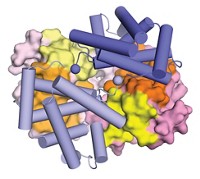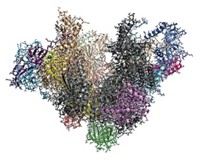Advertisement
Grab your lab coat. Let's get started
Welcome!
Welcome!
Create an account below to get 6 C&EN articles per month, receive newsletters and more - all free.
It seems this is your first time logging in online. Please enter the following information to continue.
As an ACS member you automatically get access to this site. All we need is few more details to create your reading experience.
Not you? Sign in with a different account.
Not you? Sign in with a different account.
ERROR 1
ERROR 1
ERROR 2
ERROR 2
ERROR 2
ERROR 2
ERROR 2
Password and Confirm password must match.
If you have an ACS member number, please enter it here so we can link this account to your membership. (optional)
ERROR 2
ACS values your privacy. By submitting your information, you are gaining access to C&EN and subscribing to our weekly newsletter. We use the information you provide to make your reading experience better, and we will never sell your data to third party members.
Biological Chemistry
Ancient Catalyst Uses Modern Tricks
Paleochemistry: Resurrected enzyme reveals sophisticated mechanism of action
by Sarah Everts
April 6, 2011
| A version of this story appeared in
Volume 89, Issue 15
Researchers have reconstructed an ancient thioredoxin enzyme and found that its strategy for reducing disulfide is far from primitive. The 4 billion-year-old enzyme catalyzes reduction the same way modern thioredoxins do, except that it works at lower pH, higher temperature, and with relaxed substrate specificity—characteristics useful for functioning in primordial Earth conditions and potentially in industrial applications (Nat. Struct. & Mol. Biol., DOI: 10.1038/nsmb.2020).
"We thought that the resurrected enzymes would use simple reducing chemistry, but shockingly, the very ancient enzymes worked like modern ones," says Julio Fernandez, the protein biologist at Columbia University who led the research.
Fernandez and his colleagues reconstructed the ancient enzyme by first tabulating hundreds of gene sequences of modern thioredoxin enzymes found in bacteria, animals, and plants. Then they used statistical algorithms to figure out a feasible sequence for a common evolutionary ancestor. Finally, they inserted that sequence into Escherichia coli bacteria and purified the resulting ancient enzyme.
The statistical algorithm suggested a primordial sequence that is 70% different from that of current thioredoxins. This major difference initially worried Fernandez, but not only did the protein fold into a three-dimensional structure similar to modern counterparts, it also reduced disulfide bonds.
Fernandez’ team used single-molecule force spectroscopy to figure out that the ancient thioredoxin binds substrate and reorients the substrate’s disulfide bond so an SN2 reaction can take place—just like modern counterparts.
"This paper is certainly elegant," says Barry Hall, who recently retired from Rochester University, where he developed strategies for reconstructing ancient protein sequences." There are very likely practical engineering applications for paleobiochemistry," he adds. For example, industrial processes operate under conditions very similar to primordial Earth—high temperatures and sometimes low pH. If no extant enzymes function at that temperature, and if efforts to engineer or evolve mutant thermoactive enzymes fail, resurrecting enzymes that worked in primordial Earth could be a promising alternative, Hall notes.




Join the conversation
Contact the reporter
Submit a Letter to the Editor for publication
Engage with us on Twitter